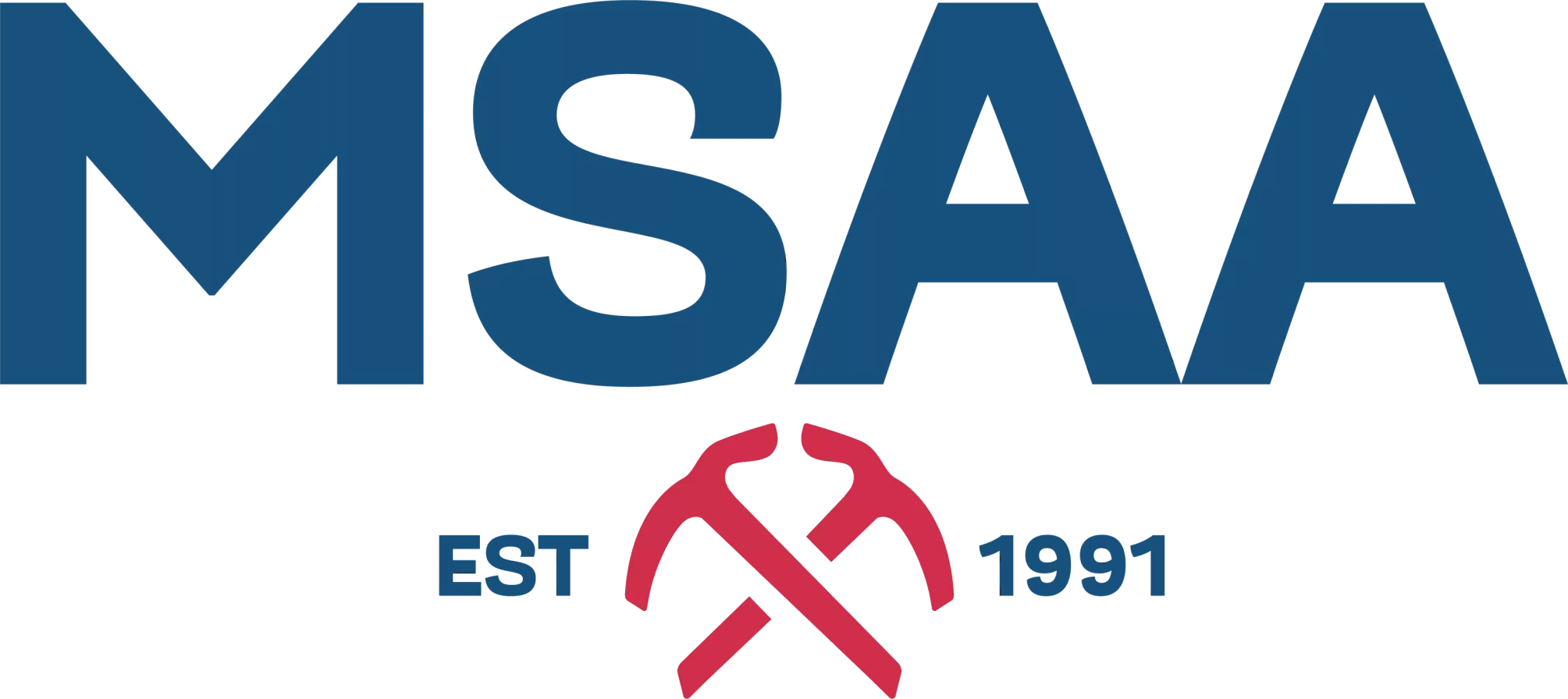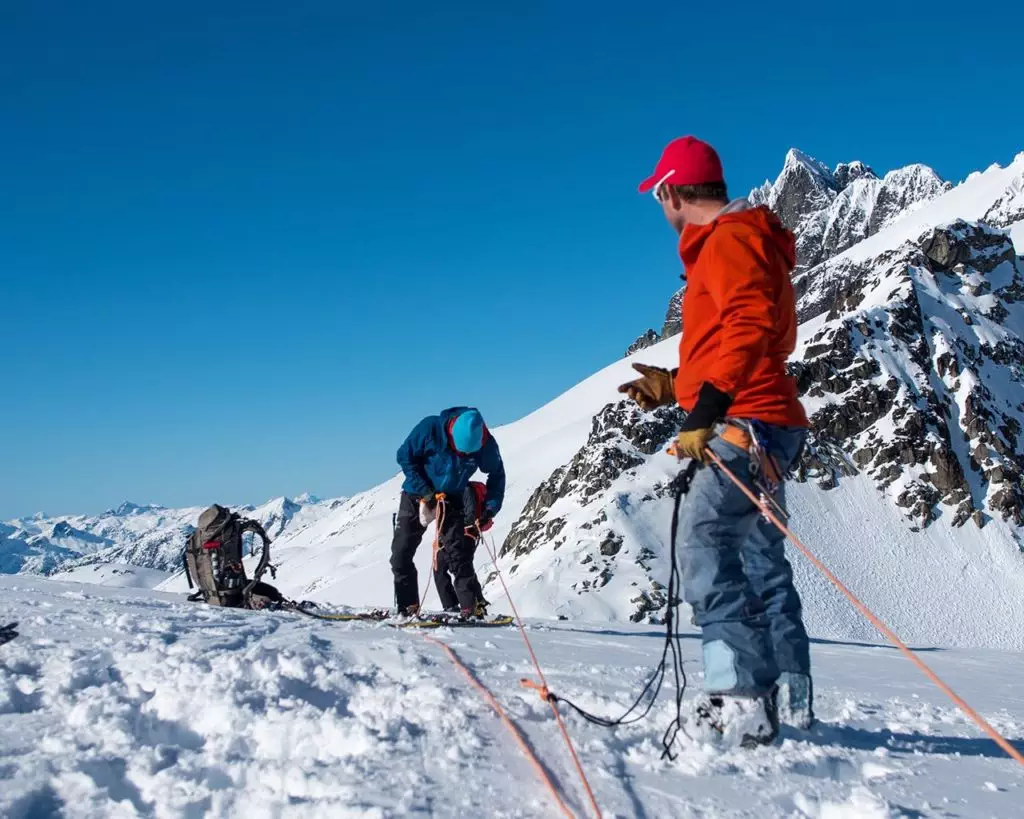Ski touring takes us to some amazing places in the mountains. But those mountains can be fraught with dangers such as avalanches. But lurking ounder the snow surface is another another hidden hazard – gaping cracks in snow and ice that can swallow people whole, also known as crevasses. For this reason, every backcountry skier or boarder travelling over glaciated terrain – particularly in the early winter and spring months – should take some form of crevasse rescue training.
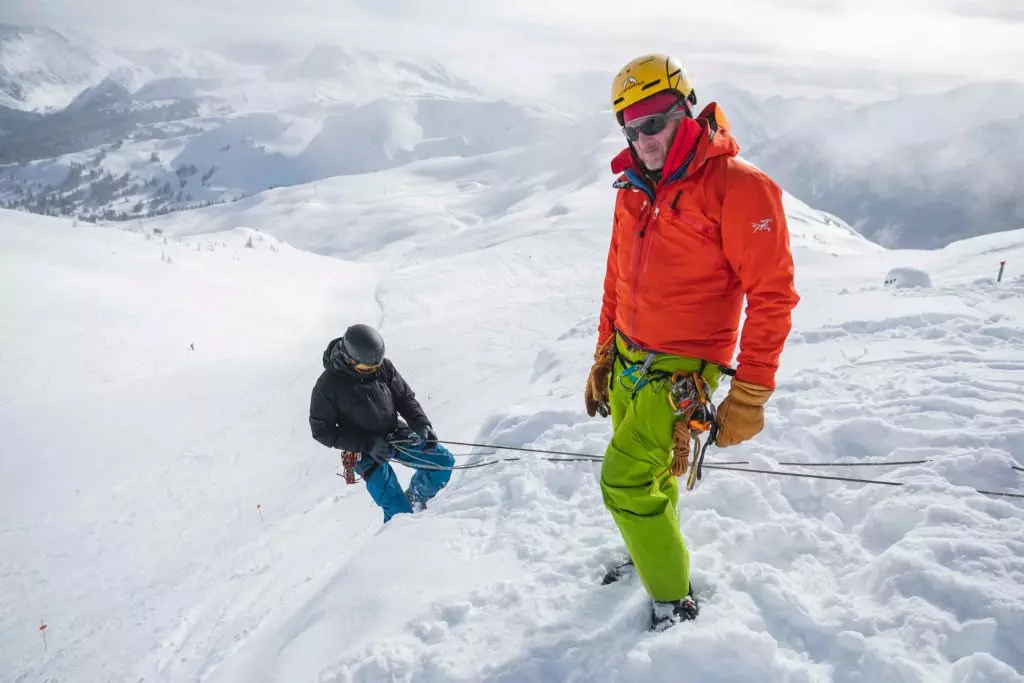
Rescue Me
Crevasse rescue is needed when one member of a party (usually attached to teammates with a rope) accidentally falls into a crevasse. The remaining members of the party are tasked with extracting their friend out of the crevasse by either hauling on the rope (main force technique) or creating a pulley system for mechanical advantage (single-pulley or z-pulley technique).
The wet and cold environment inside a crevasse increases the risk of exposure and hypothermia to the victim, even if they are lucky enough to be uninjured. In some cases the victim can simply climb out of the crevasse with crampons and an ice axe. In other situations they can hit their head during the fall and lose consciousness, leaving the rescuers to haul up a limp body weighted with a backpack. In any case, crevasse rescue training is essential for all members of the party.
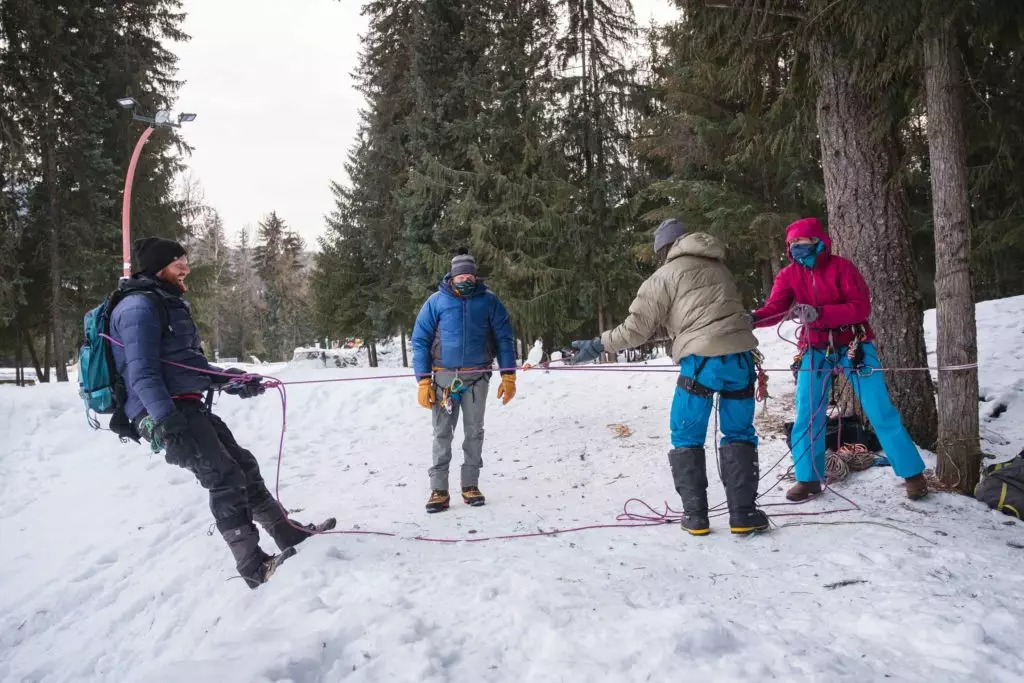
Ski Specific
The biggest difference between skiers and mountaineers is that skiers are un-roped up to 85 per cent of the time when travelling over glaciers. At Mountain Skills Academy we teach the method of retrieving an un-roped victim from the crevasse. This is done by building an anchor, rappelling into the crevasse then ascending back out to haul the victim to safety. Just like any rescue method, this process take practice in order to perform efficiently in the field.
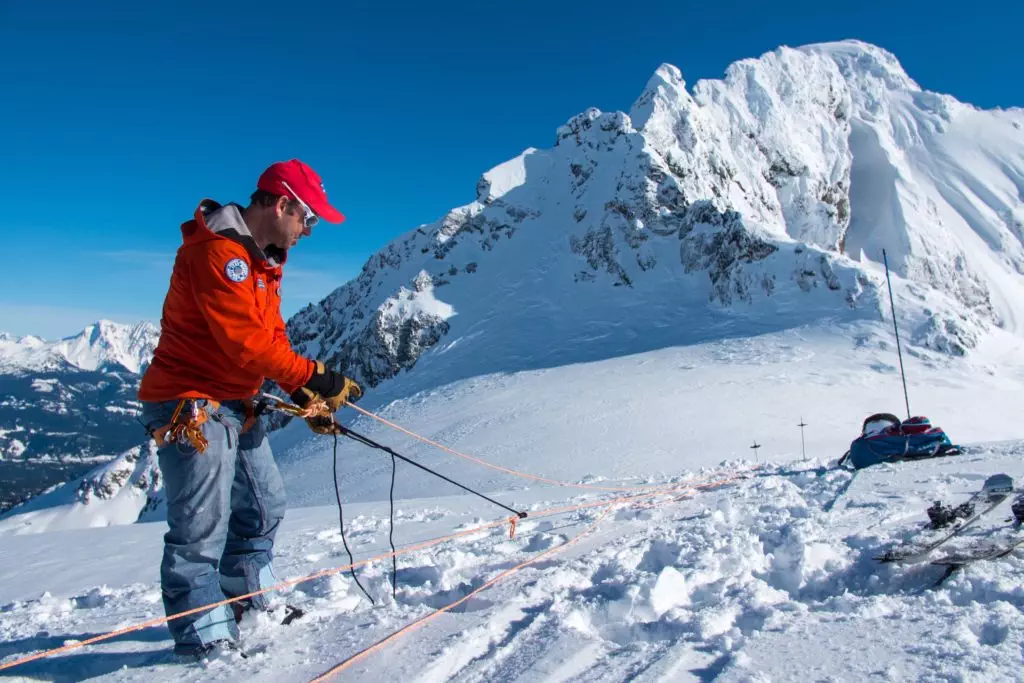
Crevasse rescue training doesn’t just teach participants about rescue techniques, but also educates about avoiding the hazard in the first place. This includes glacial geology, safe route finding, mitigating serac hazard and how to belay team members across snow bridges. Rope work is endemic to crevasse rescue, so learning the knots and various pulley configurations is requisite for an effective and efficient retrieval.
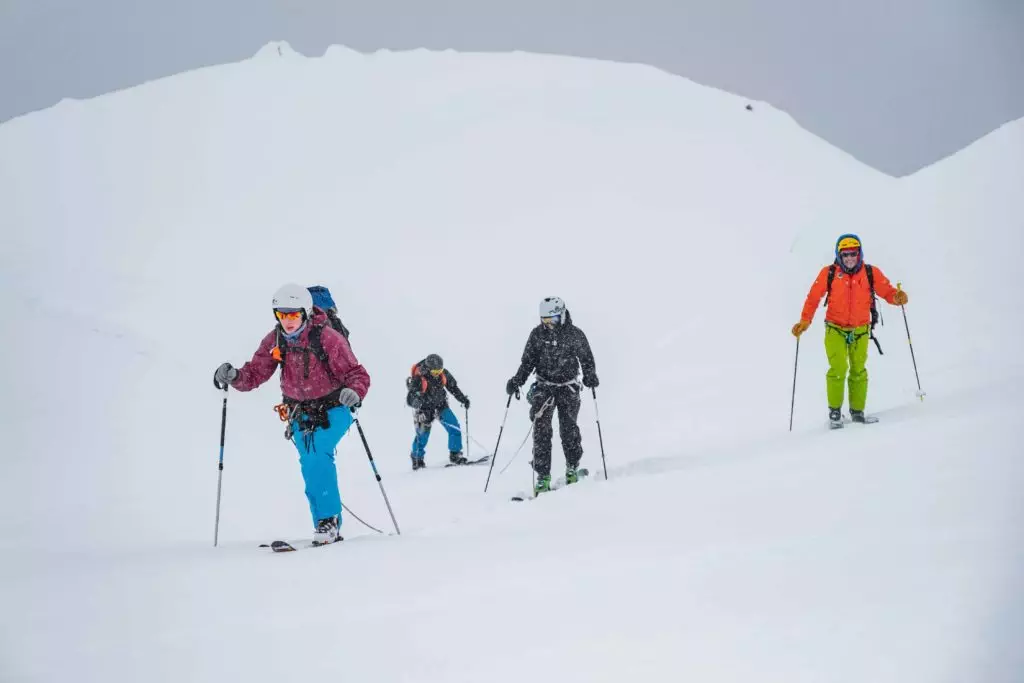
Get Real Crevasse Rescue Training Experience
While reading educational articles learning the various rescue systems indoors is a great introduction, there is no substitute for actual field experience in crevasse rescue training. Learning to build solid anchors in the snow, reducing rope friction and actually hauling the weight of a person out of a crevasse – all while exposed to the elements – is the best way to gain these essential mountain skills.
Interested in taking a crevasse rescue training course? Check out our course dates for courses in Whistler/Squamish.
